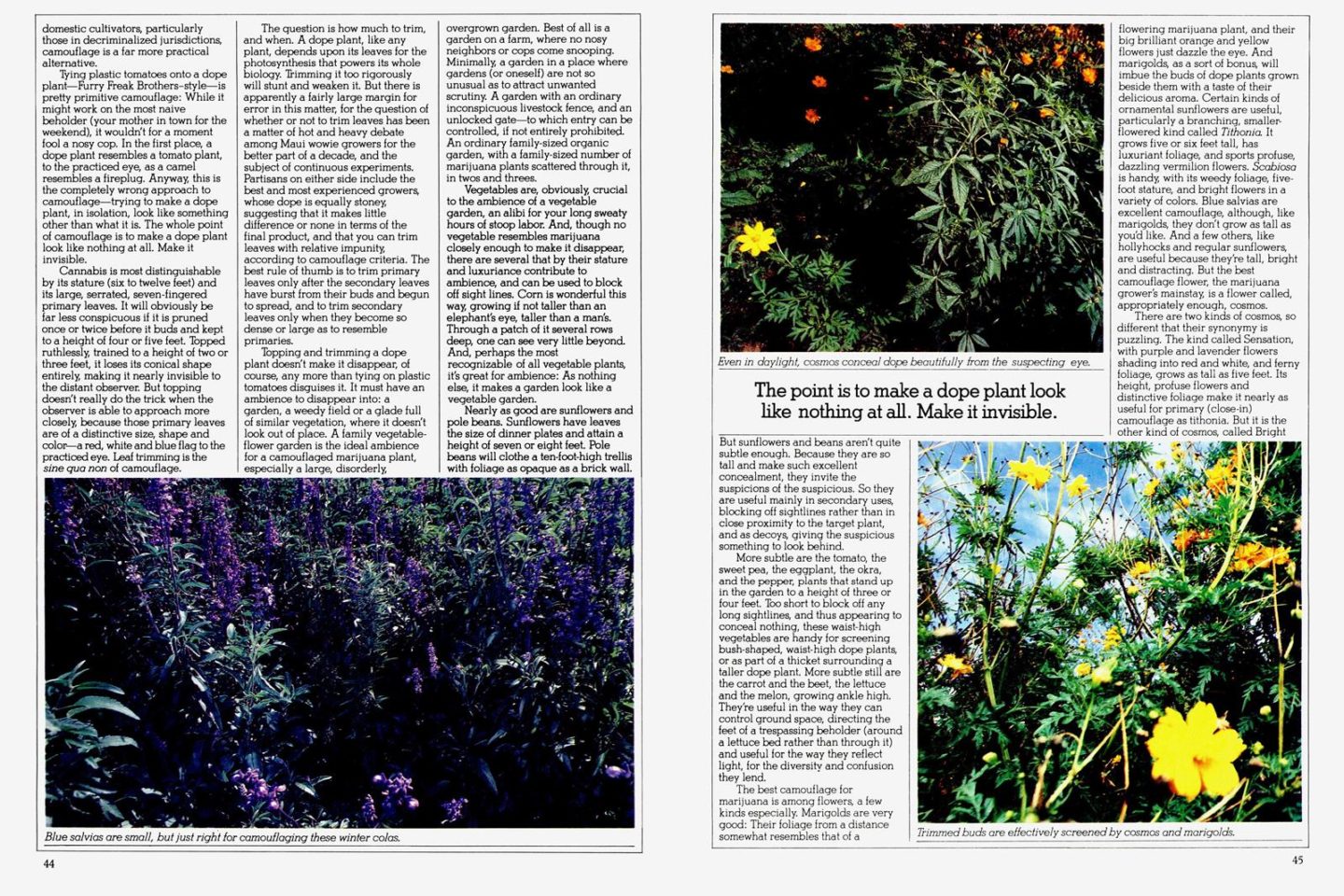By Warren Dearden
Everyone who has ever grown marijuana dreams of the day when it will be legal to do so. For one thing, cannabis is a beautiful ornamental; its foliage is luxuriant, its aroma pleasant. Since marijuana repels most common garden insects, it’s useful interplanted in an organic vegetable garden. And, of course, your own homegrown dope is the best in the world.
But alas, its not yet legal to grow marijuana in your backyard. Even in jurisdictions where grass has been decriminalized, the law doesn’t permit you to grow it openly. And the law is, in any case, only part of the problem. The immense value of premium marijuana in today’s black market makes it an irresistible target for petty thieves—in effect, a shrub with $20 bills growing on it. Until the law permits domestic cultivation and commerce at workingman’s prices, eliminating the black market, the domestic cultivator is going to have to cope with ripoffs (with badges or without) and hide his plants.
There are two basic approaches to hiding dope: concealment and camouflage. To conceal, i.e., hide from sight completely, is obviously the most satisfactory; nothing can beat growing behind an unscalable wall, or within a private greenhouse. But concealment is not always attainable or appropriate. You’re going to attract some pointed inquiries if you throw up a 12-foot concrete wall around a suburban quarter acre. Barbed wire, electrified fences, and guard dogs only attract attention. And heavy security of this sort will, even if it works, take most of the fun out of growing it. For most personal-use domestic cultivators, particularly those in decriminalized jurisdictions, camouflage is a far more practical alternative.
Tying plastic tomatoes onto a dope plant—Furry Freak Brothers-style—is pretty primitive camouflage: While it might …
Read More
Author: High Times / High Times


